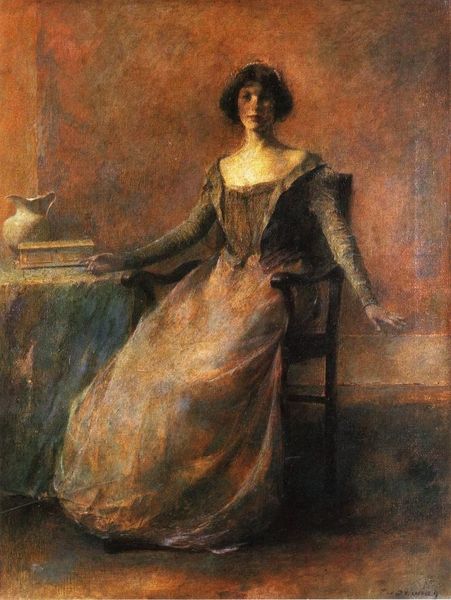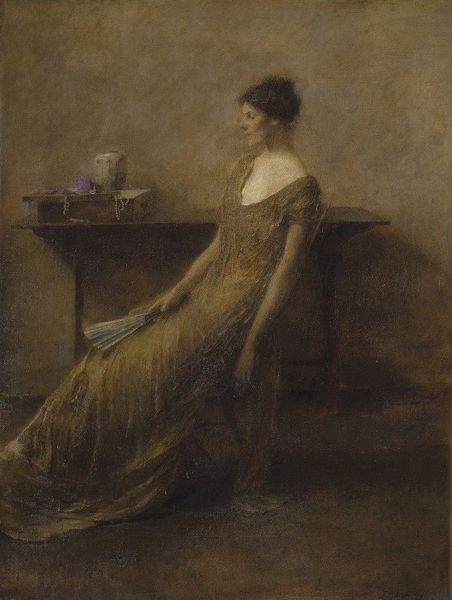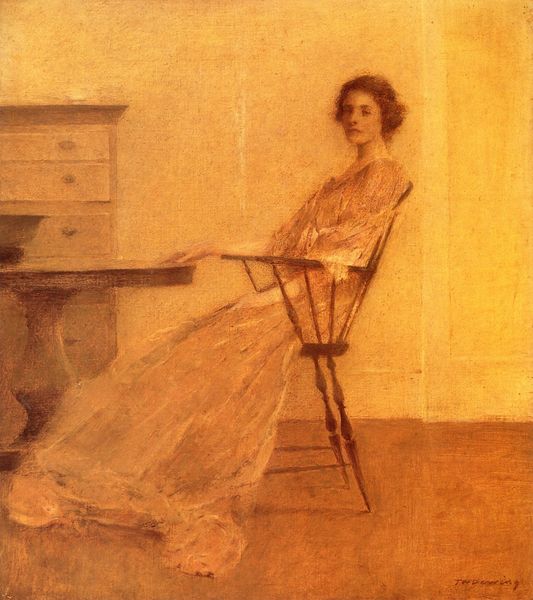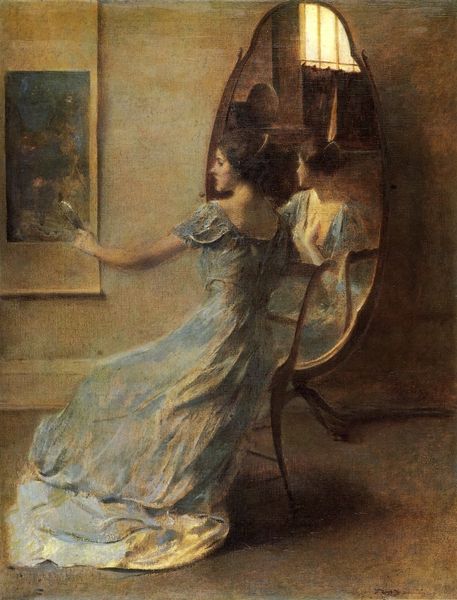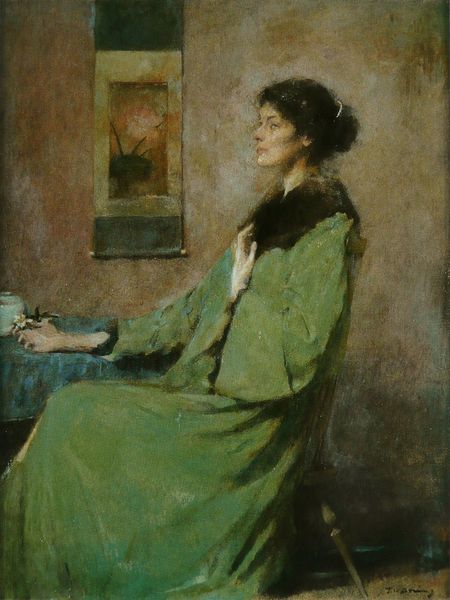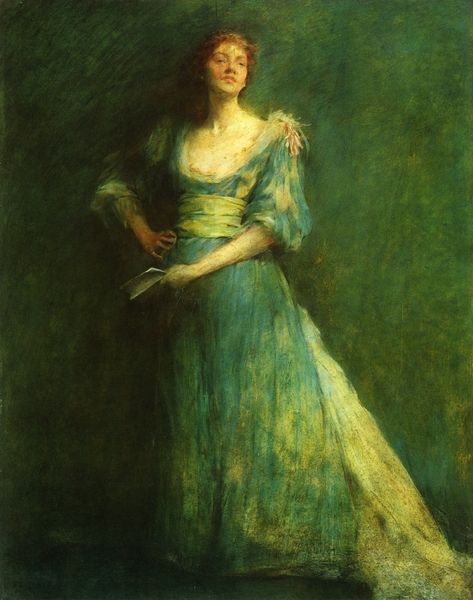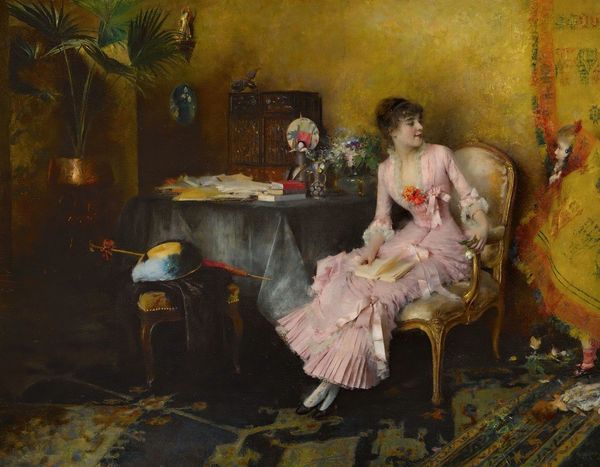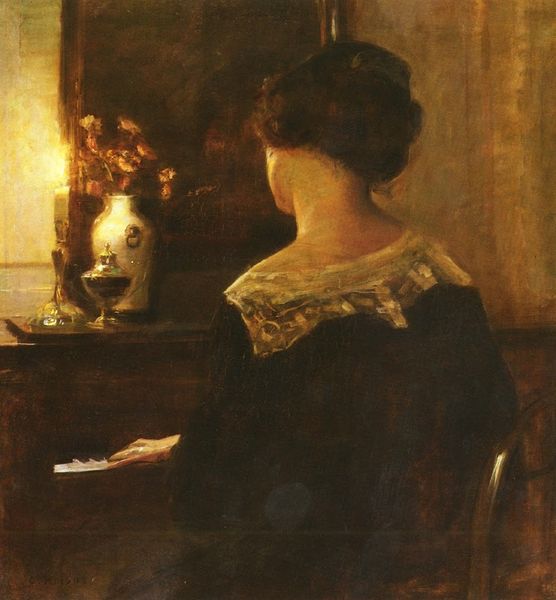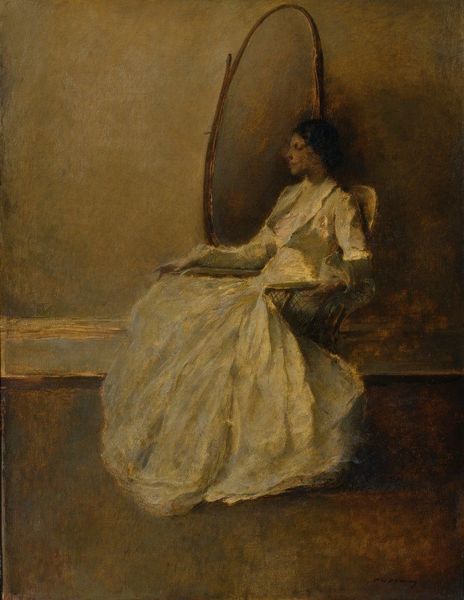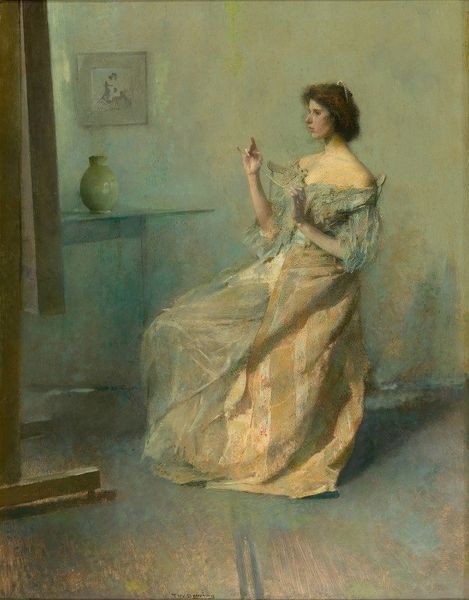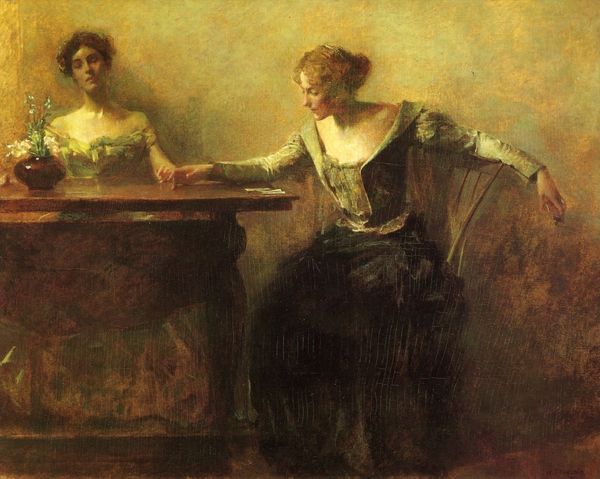
Copyright: Public domain
Curator: Thomas Wilmer Dewing’s painting "The Lute" from 1904 is what we're looking at here. The muted palette gives it an incredibly dreamlike quality, doesn't it? Editor: Absolutely. It’s almost aggressively tranquil. A quiet space where light itself seems to be contemplating its role. The composition, especially how the lute mirrors the lady's pose—a study in controlled curves and subdued tension. Curator: Exactly! It feels like eavesdropping on a moment of contemplation, perhaps just before a performance. You can almost feel the weight of expectation or maybe just the simple pleasure of making music. It reminds me of those lazy summer afternoons filled with half-formed intentions. Editor: The formal arrangement reinforces this. Dewing positions the figure almost as an extension of the dark piano form—anchoring the ethereal nature of impressionistic brushwork to the structural elements of form. Do you see how this subtle placement adds to a layered, thoughtful experience of space within the painting? Curator: I do, it's like a dance between structure and emotion. It's there to remind you that nothing stands alone. Not art, not music, not us. Everything’s in constant conversation and what one part plays changes how we see it all. Editor: Indeed. The use of oil paint lends a delicate, almost blurred appearance, challenging strict outlines. And philosophically it raises questions about clarity itself—how do we discern meaning, emotion, from these seemingly veiled visual clues? Is it about finding or projecting? Curator: Perhaps it's both finding and projecting! After all, what’s art but a fancy mirror that sometimes flatters, sometimes exaggerates, but always, always reflects a little bit of us? Editor: Well said. A potent meditation on aesthetics and human interpretation. Curator: And one more moment, a quiet chord struck, as the lady turns toward us!
Comments
No comments
Be the first to comment and join the conversation on the ultimate creative platform.

